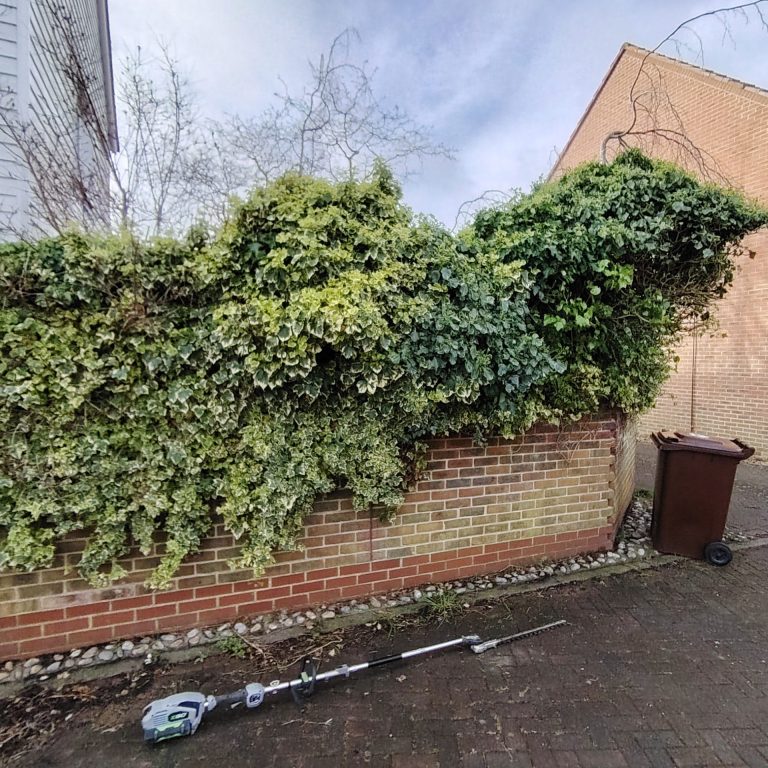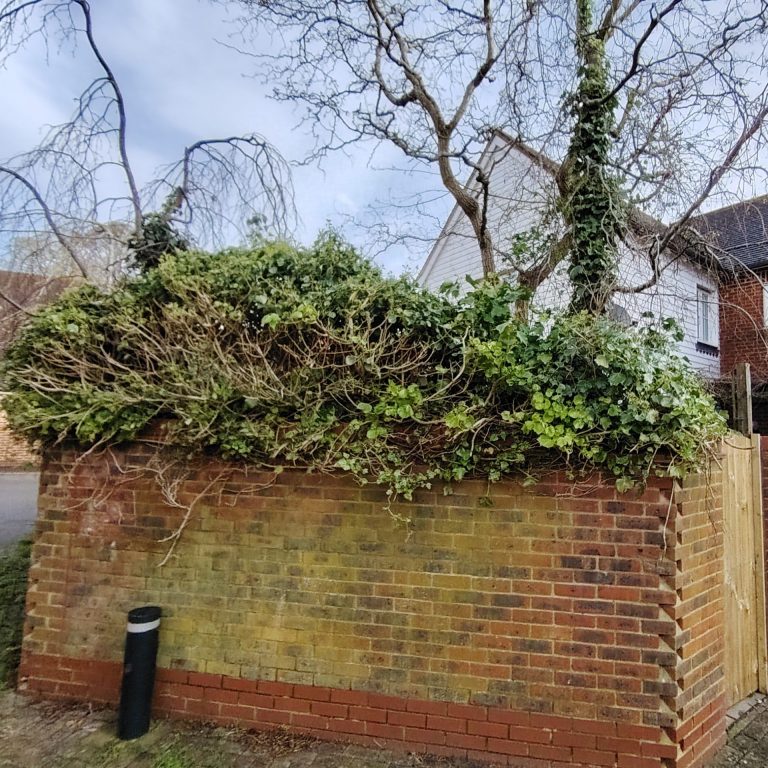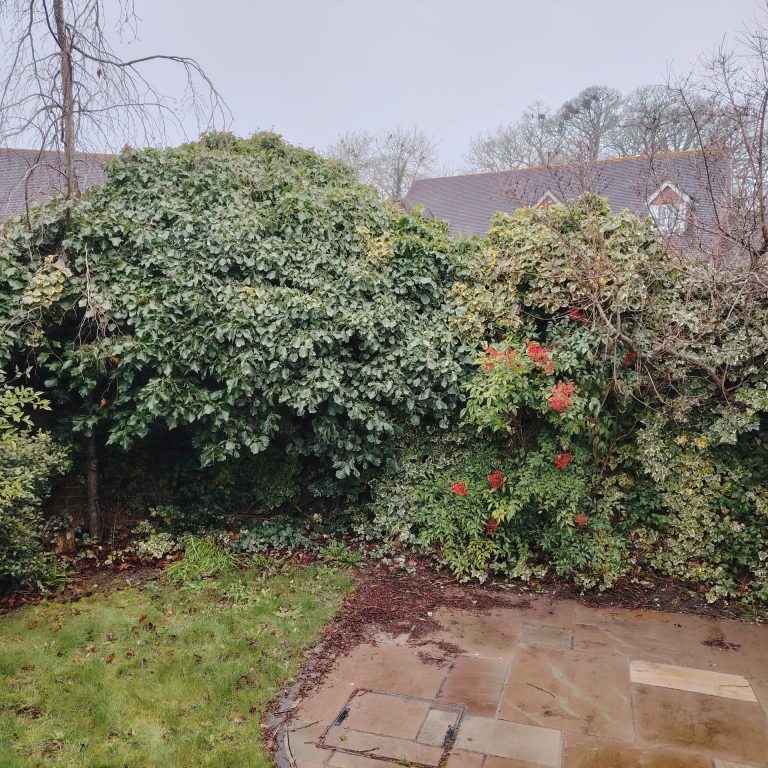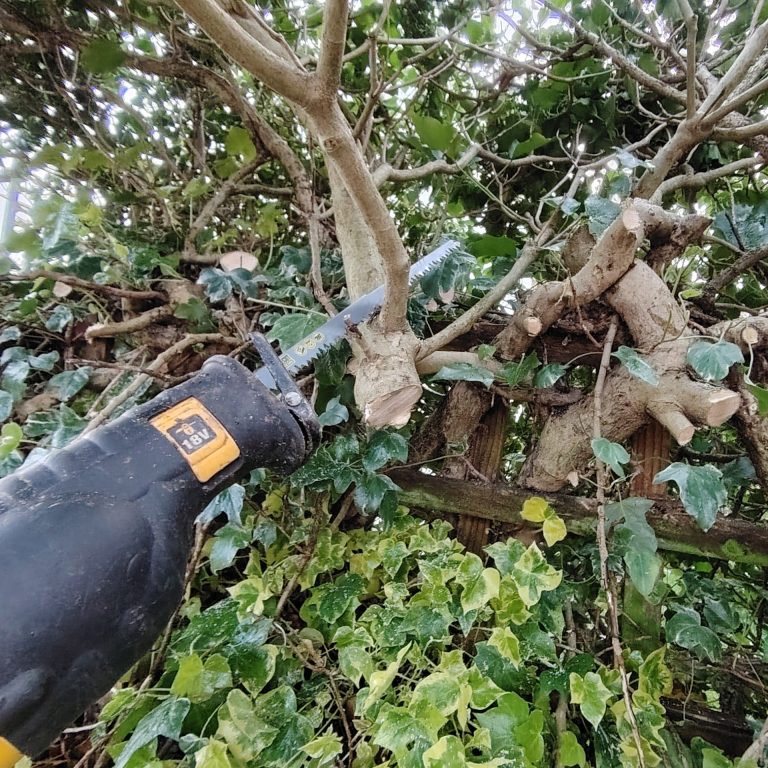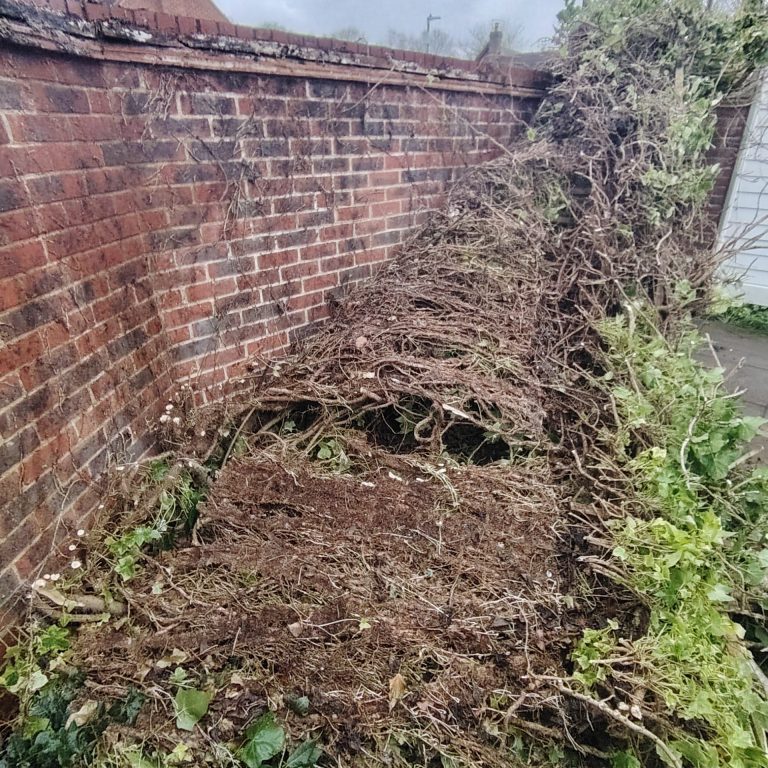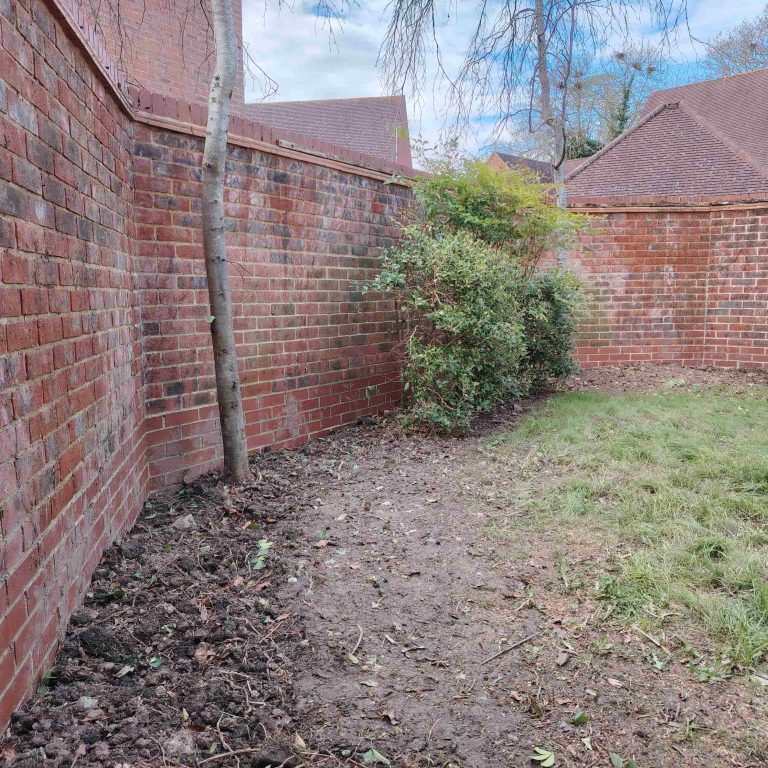Huge English Ivy - Garden Clearance - Hamstreet
The roots had run all the way along the beds and needed to be dug out before any new planting could be considered. There were also 2 small trees very close to each other that had grown too tall for the small space that needed cutting down.
Ivy the Terrible!
Those innocent pots of ivy purchased at the school fete for a £1 can turn into a monster if not regularly trimmed and maintained.
Personally, I am completely against ivy being planted in a garden. In a pot or a hanging basket to make a decorative display with other plants, yes, why not?
There are plenty of other climbers that are less invasive with more attractive foliage and blooms than english ivy.
I also find when pruning ivy, the dust gives me a streaming runny nose.
On the lighter side, those thick hairy branches always gives me a grin, as they remind me of monkey arms
Think Nests
Before taking on any hedge cutting or clearance always check for birds nests. Nesting season in the UK is officially from February until August, and it is against the law to disturbs birds during this period.
You can find out more here – Nesting birds and the law – RSPB England.
Surprisingly, there was no movement of birds or evidence of nests.
How to Remove Ivy
Using a hedgetrimmer is the quickest method to cut away the bulk of the ivy.
Top tip: We use a battery operated reciprocating saw with a 20cm ‘rough wood’ blade. It’s ideal for getting into tight areas and for when the branches are too large for a pair of loppers. It makes quick work and no tired arms from sawing. Always wear gloves, goggles and protective ear wear.
Once the ivy was released from the trellis, we used a shovel and a hoe to scrape it from the wall, it peeled off quite easily and was then cut at bottom exposing an entanglement of roots.
Now the hardest part, digging out the roots. A combination of the spade, loppers and the reciprocating saw, bear in mind the blades will eventually blunt if used in the dirt.
The roots can run far and wide, so you need to be prepared to turn over the soil around the area where there is access, to stand a chance of being totally rid of the ivy.

